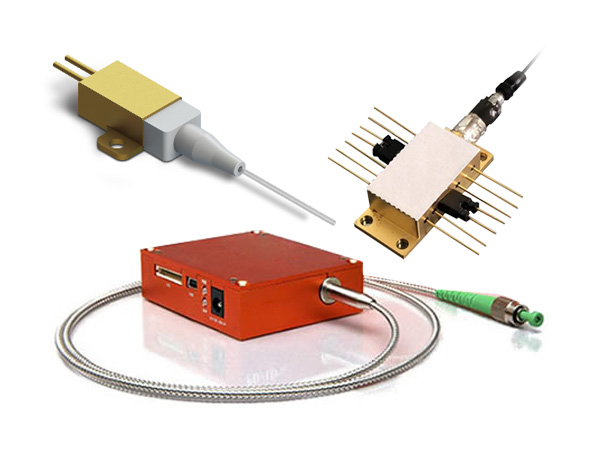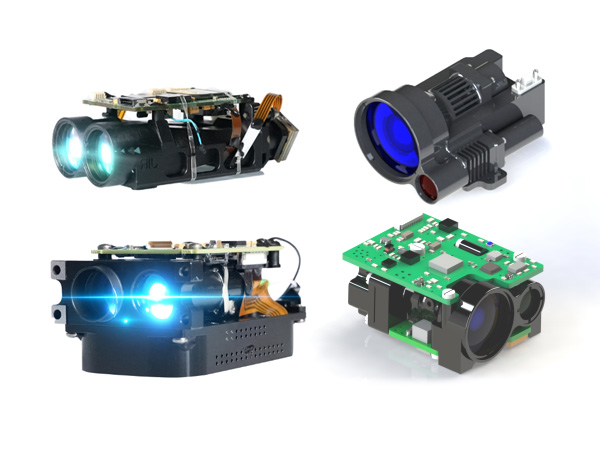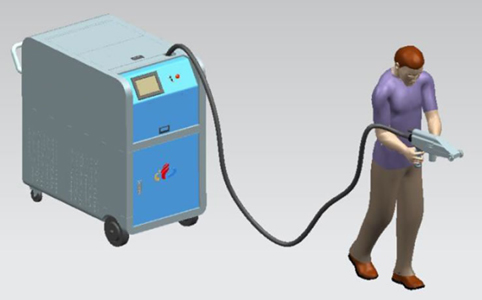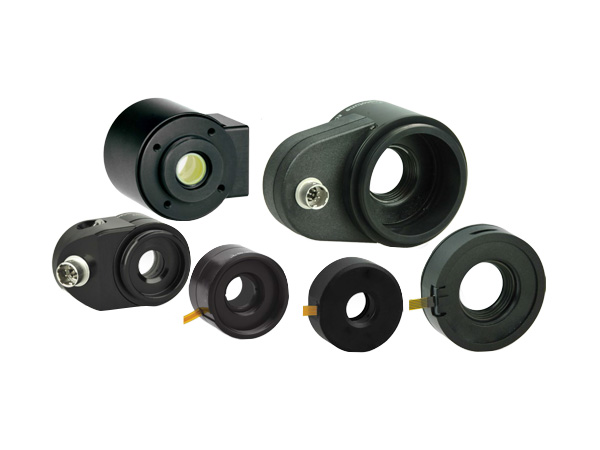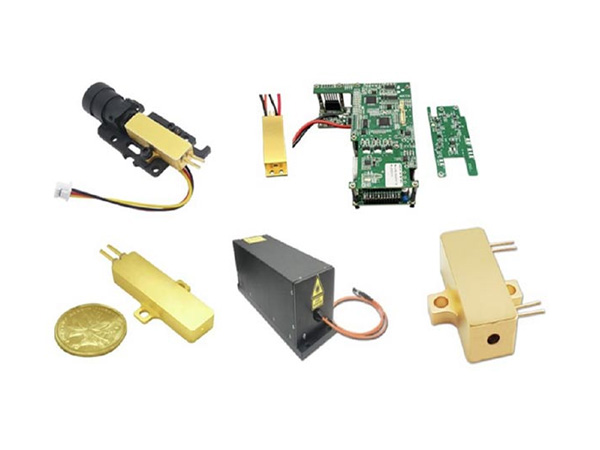Fiber Ultrafast Lasers: Technical Principles, Characteristics, Applications and Development Prospect
In the era of rapid technological advancement, laser technology, with its unique advantages, has been deeply integrated into numerous fields such as industry, healthcare, and communication. It has become a crucial force driving the transformation and development of various industries. Among them, ultrashort pulse lasers, as the "bright pearl" in the field of lasers, have attracted the attention of global researchers and the industrial community due to their excellent temporal characteristics and huge application potential. The emergence of fiber ultrafast lasers has injected new vitality into the development of ultrashort pulse lasers and opened a new chapter in the application of laser technology.

I. Basic Principles of Fiber Ultrafast Lasers
Fiber ultrafast lasers are ultrashort pulse laser light sources constructed based on active and passive optical fibers. During their operation, continuous-wave pump light, like an unceasing "energy messenger", is injected into the mode-locked fiber laser. At this time, the saturable absorption effect acts like a precise "time regulator", performing a magical "trick" inside the optical fiber to skillfully converge the energy, thus generating extremely short laser pulses. Specifically, the saturable absorber has different absorption characteristics for light of different intensities. Low-intensity light is largely absorbed, while high-intensity light can pass through smoothly. This mechanism causes the optical pulses to be continuously compressed within the optical fiber, ultimately forming ultrashort pulses.
This technology features an extremely fast optical switching effect and can achieve ultra-high repetition rates in the megahertz or even gigahertz range. For example, in some advanced scientific research experiments, the repetition rate of fiber ultrafast lasers has reached the gigahertz level, enabling the generation of billions of laser pulses per second. This provides a powerful and stable pulsed light source for scientific research and technological applications. The underlying principles involve complex optical nonlinear effects and the interaction processes between light and matter. By precisely controlling factors such as the material properties and structural parameters of the optical fiber, as well as the energy and wavelength of the pump light, the stable generation and output of ultrashort pulses can be achieved.
II. Characteristics of Fiber Ultrafast Lasers
(I) High Repetition Rate
Fiber ultrafast lasers perform outstandingly in terms of repetition rate, generally reaching levels ranging from tens to hundreds of megahertz. This high repetition rate characteristic makes them an "excellent assistant" in the fields of precision measurement and fine processing. For instance, in the high-precision detection of small-sized parts in precision measurement, laser pulses with a high repetition rate can quickly and repeatedly scan and measure the surface of the parts, obtaining a large amount of measurement data. This enables the achievement of measurement accuracies at the micrometer or even nanometer level. In semiconductor chip manufacturing, leveraging the high repetition rate of fiber ultrafast lasers, rapid and precise marking and etching can be carried out on the chip surface, ensuring the production quality and efficiency of the chips.
(II) Ultrashort Pulses
These lasers can generate ultrashort pulses in the femtosecond or picosecond range. Such ultrashort pulses possess a powerful energy density and exhibit excellent penetration and cutting capabilities. In the medical field, ultrashort pulse lasers can be applied in ophthalmic surgeries. Through the precise release of pulse energy, fine cutting and repair of the diseased parts of the eye can be achieved without damaging the surrounding tissues, significantly improving the safety and success rate of the surgeries. In the biological field, when used for biological fluorescence excitation, ultrashort pulse lasers can avoid thermal damage to biological samples, enabling high-resolution imaging of biological molecules and cells and providing strong technical support for life science research. In the field of materials science, by taking advantage of their ultrashort pulse characteristics, various metal and non-metal materials can be efficiently processed, such as cutting, drilling, and surface treatment. The processing accuracy can reach the micrometer level, and in some cases, even the nanometer level.
(III) High Energy Conversion Efficiency
Thanks to the unique design of the optical fiber structure, the energy conversion efficiency of fiber ultrafast lasers is extremely impressive, usually reaching over 40%. Compared with traditional solid-state lasers or gas lasers, this advantage allows fiber ultrafast lasers to utilize energy more efficiently during operation, reducing energy consumption and operating costs. For example, in large-scale industrial production, using fiber ultrafast lasers for material processing can save a substantial amount of electrical energy annually. At the same time, it can enhance production efficiency and reduce production costs, bringing significant economic benefits to enterprises.
(IV) Good Stability
Fiber ultrafast lasers are based on an all-fiber structure and have the characteristics of polarization maintenance and flexibility for bending. This enables them to operate stably in complex working environments and be almost immune to external interference. Whether in high-temperature or low-temperature environments, or in situations with electromagnetic interference, fiber ultrafast lasers can maintain good working performance and output stable laser pulses. This high stability provides a solid guarantee for their applications in fields with extremely high requirements for equipment reliability, such as aerospace and the military. For example, in the aerospace field, fiber ultrafast lasers can be used for the processing and inspection of aircraft components, ensuring the normal operation of the equipment and the safety performance of the aircraft in extreme environments.
III. Application Fields of Fiber Ultrafast Lasers
Fiber ultrafast lasers, with their unique technical advantages, have extensive and in-depth applications in multiple fields, including industry, healthcare, and scientific research.
In the industrial field, they have become one of the core equipment of advanced manufacturing technologies. In the automotive manufacturing industry, fiber ultrafast lasers can be used for the precision processing of automotive components, such as drilling and cutting of engine cylinder blocks, as well as welding and marking of the vehicle body surface. By precisely controlling the energy and action time of the laser pulses, high-quality processing effects can be achieved, improving the production accuracy and reliability of automotive components. In the electronics manufacturing field, fiber ultrafast lasers can be applied in various processes, such as cutting and drilling of circuit boards, as well as packaging and testing of chips. Their ultrashort pulse characteristics can effectively prevent thermal damage to circuit boards and chips, ensuring the performance and quality of electronic products.
In the medical field, the application of fiber ultrafast lasers has brought revolutionary changes to disease diagnosis and treatment. In addition to the aforementioned ophthalmic surgeries, in the field of dermatology, ultrashort pulse lasers can be used to treat various skin diseases, such as the removal of age spots and tattoos. Through the principle of selective photothermal action, the laser energy can precisely act on the diseased tissues, destroying the pigment particles or tattoo pigments without damaging the surrounding normal skin tissues. In tumor treatment, fiber ultrafast lasers can be used for photodynamic therapy and laser ablation of tumors. By utilizing the high energy density of the laser, tumor cells can be directly destroyed, providing cancer patients with a new treatment option.
In the scientific research field, fiber ultrafast lasers are important tools for numerous cutting-edge scientific studies. In the field of physics, they can be used to research cutting-edge topics such as strong field physics and quantum optics. By generating ultrashort and ultra-strong laser pulses, extreme physical conditions can be simulated to explore the behavior and characteristics of matter under strong laser fields. In the field of chemistry, fiber ultrafast lasers can be applied to study the ultrafast kinetic processes of chemical reactions, helping scientists understand the microscopic mechanisms of chemical reactions and providing theoretical support for the development of new materials and chemical reactions. In the biological field, in addition to biological fluorescence excitation and imaging, fiber ultrafast lasers can also be used in research such as single-cell manipulation and gene editing, opening up new directions for life science research.
IV. Development Prospects of Fiber Ultrafast Lasers
As an outstanding representative of ultrashort pulse laser technology, fiber ultrafast lasers have an infinitely broad application prospect. With the continuous progress of science and technology and the increasing demand for high quality, high efficiency, and low cost in various industries, fiber ultrafast lasers based on ultrashort pulse laser technology will witness more technological breakthroughs and innovative developments.
In the future, with the continuous development of materials science and optical technology, the performance of fiber ultrafast lasers will be further enhanced. For example, through the research and development of new optical fiber materials and the optimization of the optical fiber structure, it is expected to achieve higher energy output, shorter pulse widths, and higher repetition rates. At the same time, with the deep integration of laser technology with emerging technologies such as artificial intelligence and big data, the intelligence level of fiber ultrafast lasers will continue to increase, enabling more precise control and automated operation to meet the increasingly complex application requirements in different fields. In terms of application expansion, fiber ultrafast lasers will gradually penetrate into more emerging fields. For example, in the new energy field, they can be used for the manufacturing and processing of solar cells, improving the conversion efficiency and production efficiency of solar cells. In the field of quantum communication, as key light source devices, fiber ultrafast lasers will provide stable and reliable light source support for quantum key distribution and quantum information processing. In addition, with the growing emphasis on environmental protection and sustainable development, fiber ultrafast lasers will also play an important role in fields such as green manufacturing and environmental protection treatment. In conclusion, fiber ultrafast lasers, with their unique technical advantages and huge development potential, will surely play an even more important role in future technological development and social progress, continuously helping human technology reach new heights.
For more information on our fiber laser seed products, pleaseclick here.
 English
English Français
Français Deutsch
Deutsch euskara
euskara Русский язык
Русский язык Italiano
Italiano Português
Português Nederlands
Nederlands Polski
Polski Greek
Greek Lietuva
Lietuva Türkçe
Türkçe 日本語
日本語 한어
한어 中文
中文 தாமில்
தாமில் فارسی
فارسی हिंदी
हिंदी Tiếng Việt
Tiếng Việt ภาษาไทย
ภาษาไทย Pilipino
Pilipino Indonesia
Indonesia தாமில்
தாமில்
